 Dick Halloran and his late night guests. 
We're revisiting the art of headshop posters with this image of an unidentified afro-topped beauty shot in 1979 by famed German lensman Cheyco Leidmann. This particular piece may look familiar to cinema fans. It's the poster that was over Scatman Crothers' bed in the 1981 scarefest The Shining. His character Dick Halloran was about as single as a man could be in that movie—living alone, hanging in his jammies, watching television late at night, with naked art looking down on him. Getting axed in the sternum was really a case of putting the poor guy out of his misery.
Halloran didn't have just one guardian angel on his walls. The reverse shot from that same sequence shows another poster, located over the television. That model we can identify. She's actress and centerfold Azizi Johari, who's made a few appearances here on the website. We even shared the very same poster a couple of years ago. But we decided to bring her back today so our visit to Halloran's bachelor pad would be complete. See more Johari here and here. She's well worth it.
 Jim Kelly takes on the mob in hit-and-miss karate adventure. 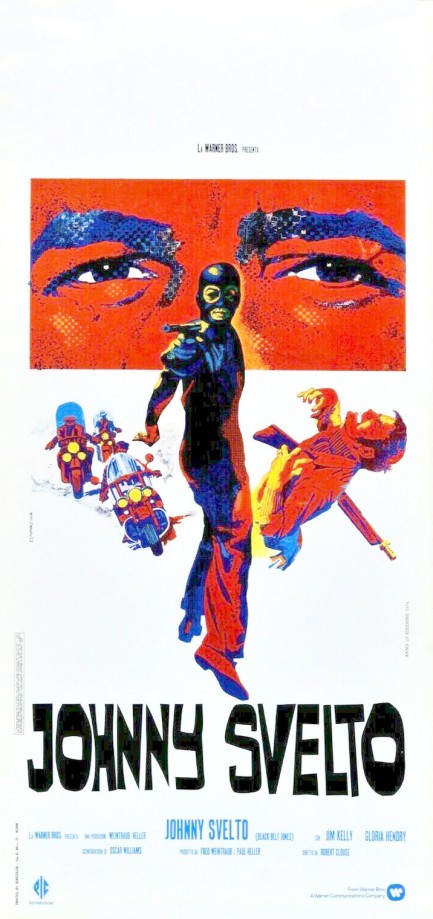
The blaxploitation/kung fu flick Black Belt Jones premiered in the U.S. today in 1974, but we're sharing the Italian poster for two reasons: this Ermanno Iaia effort is more interesting than the U.S. art; and it's another example of African American stars being erased from Italian promo art. We assume it happened because Italian distributors figured many Italians wouldn't knowingly choose to see a film with a black star. Well, this one featured one of the biggest black stars—martial arts sensation Jim Kelly. He's not widely known today, but during the height of the martial arts craze he was an icon because of his screen charisma and cred. And by cred we mean he won four martial arts championships in 1971 alone, including the world middleweight karate title.
There's no release date for Black Belt Jones in Italy, but probably it played there during the summer of ’74, retitled Johnny lo svelto, or “Johnny quick.” Plotwise the mafia have learned that city of L.A. plans to erect a new civic center, and have bought up all the land at the prospective building site except a karate dojo owned by a martial arts instructor named Papa Byrd—and Papa won't play. Meanwhile, somewhere across town, Kelly is asked by cops to investigate the L.A. mob, who are getting cozy with local politicians and building up so much power they might soon be untouchable. In the tight knit local martial arts community, Kelly and Byrd know each other, so when Byrd turns up dead Kelly is motivated to get to the bottom of the murder.
The movie is partially a burlesque, with bits of slapstick, some salty slang, and many of the characters constructed as pure stereotypes—Italian gangsters crying, “Mamma mia!” and that sort of thing. Viewed in a certain frame of mind it's funny, and considering it features an ass-kicking Scatman Crothers (long before getting axed in the chest in The Shining), the red hot Gloria Hendry, and Love Boat bartender Ted Lange as a minor league crook, there's plenty worth seeing here. That includes Kelly's martial arts, which are fun to watch, once you get past a bizarre opening fight shown entirely in slow motion. Kelly's abs are also on regular display, which made the Pulp Intl. girlfriends happy.
So Kelly knows martial arts and looks great, but can he act? Considering the constraints, he does okay. These low budget ’70s movies didn't give stars much chance to sharpen their performances, and they're nearly always poorly paced in terms of dialogue, but he has charisma and his acting matches that of Bruce Lee or any other of the action stars from the period. They weren't hired to do Hamlet, after all. With Kelly at its center Black Belt Jones is worth a watch. And as we said, viewed in a certain frame of mind, it's even sort of good. But by frame of mind, we mean one in which you don't take it too seriously—the filmmakers certainly didn't seem to. We mean that as a compliment.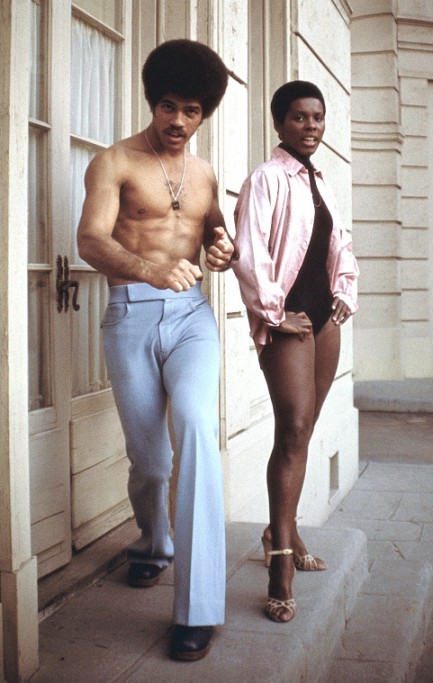 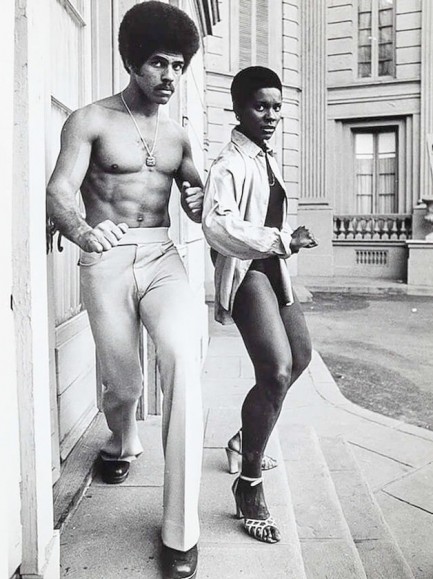 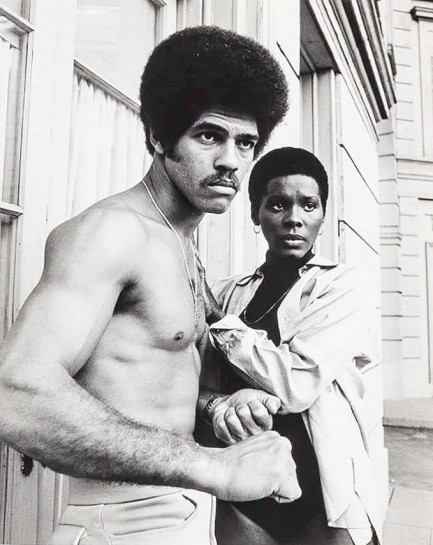 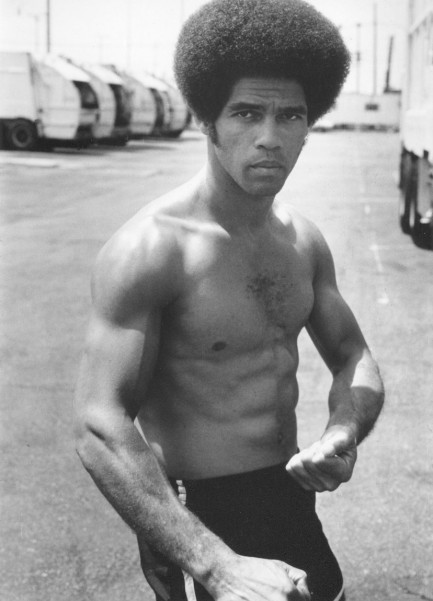 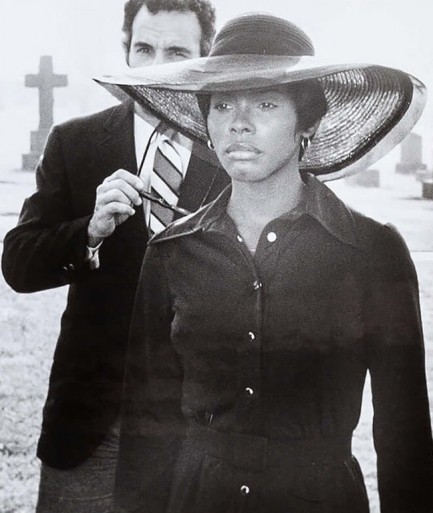 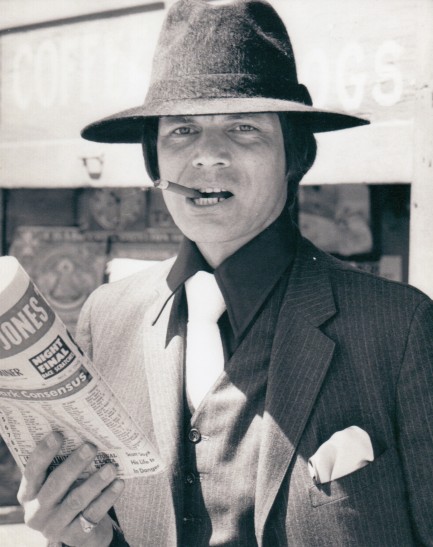  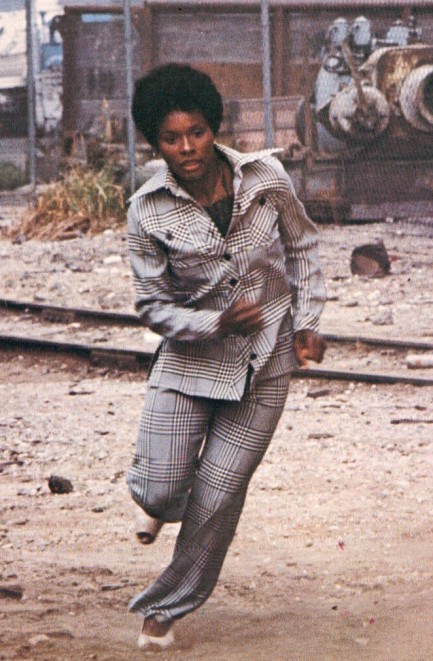 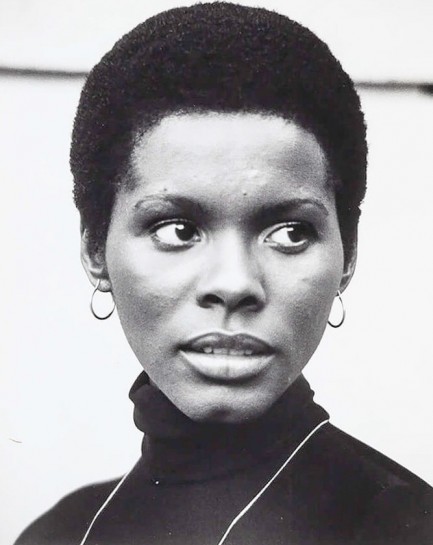 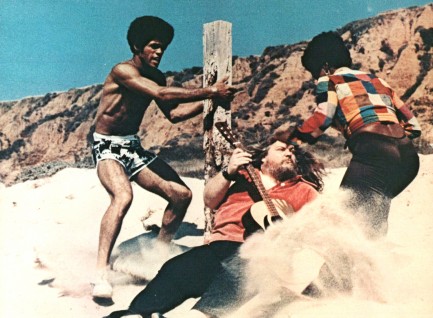 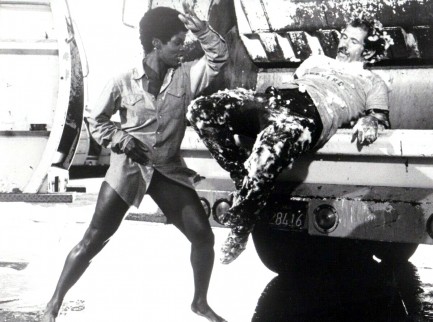 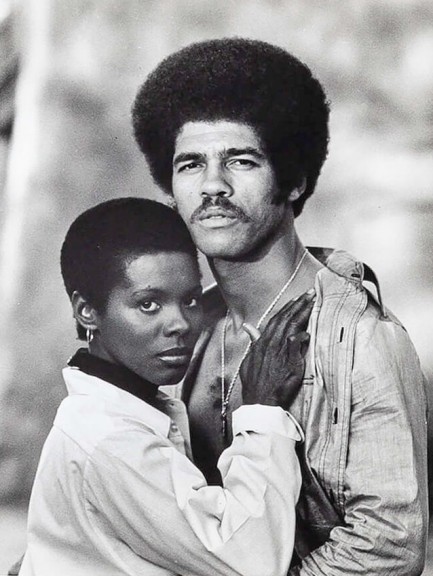 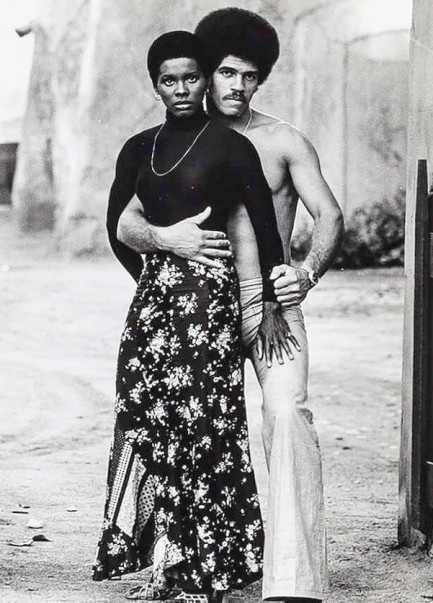 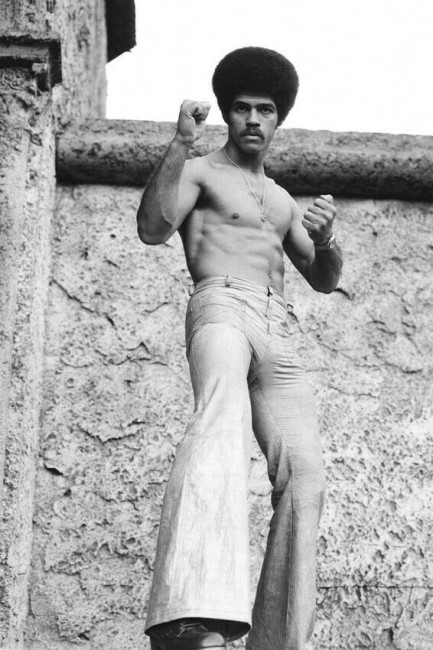
 Eli Roth and AMC make History with a seven part look at horror cinema. 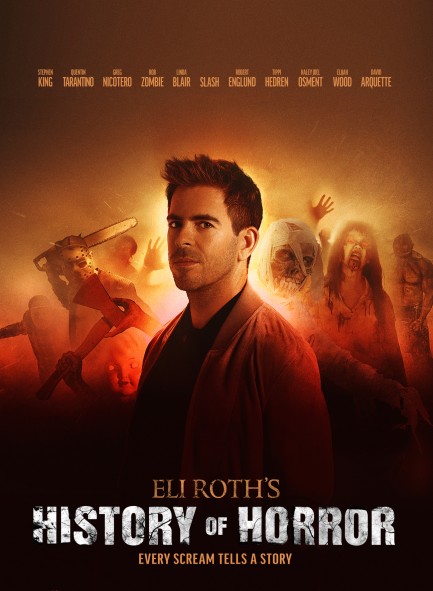
Those of you in the U.S. who appreciate horror cinema may want to carve out a little time Sunday night for the final episode of the retrospective Eli Roth's History of Horror. It's been airing weekly on the cable network American Movie Classics, aka AMC, since mid-October. Though the British network BBC broadcast a very good three part horror retrospective in 2010 (and it even had a similar title—A History of Horror), genre landscapes shift quickly. The Brit series was made before important films like Get Out, It, Let Me In, its remake Let the Right One In, et al hit cinemas. Eli Roth's History of Horror is a newer and deeper look at fright films. Each 60-minute episode focuses on a specific type of terror, such as vampires, monsters, demons, and slashers.
Overall the series is great. Roth discusses not just the movies, but horror's cultural impact, and weights those observations toward the last ten years. Because of the change that has occurred this decade those sections resonate nicely. Horror's ability to make social issues digestible as allegories is a key part of the form's worth. For instance, Get Out's idea of the sunken place, a metaphor for living (and dying) while black in America, would be rejected by many white filmgoers if it were in a standard narrative. But for us the social impact of horror movies is merely a bonus. We love them viscerally first, intellectually second. We love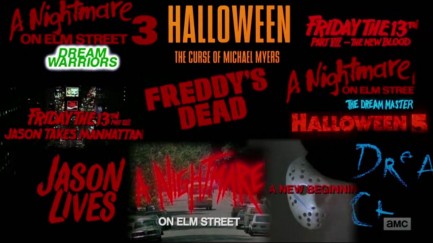 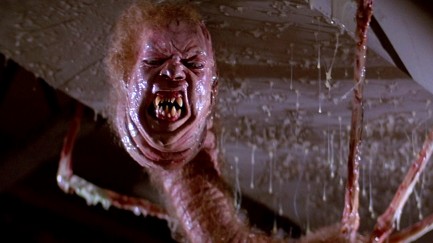 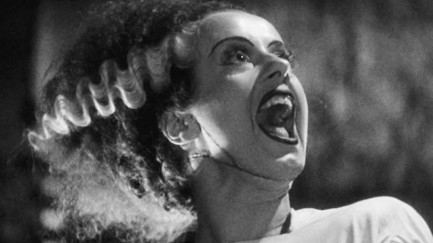  the tension that results from not knowing—usually, at least—which characters will survive. We love how the films' kinetic and often low budget natures lead to amazing little accidents, such as the bit in The Texas Chainsaw Massacre when Leatherface grabs Teri McMinn on the porch of his house and both the girl's sandals fly off. That sort of detail isn't in a script. It happens during the shoot, and the director thanks the filmic gods for the extra iota of serendipitous realism. the tension that results from not knowing—usually, at least—which characters will survive. We love how the films' kinetic and often low budget natures lead to amazing little accidents, such as the bit in The Texas Chainsaw Massacre when Leatherface grabs Teri McMinn on the porch of his house and both the girl's sandals fly off. That sort of detail isn't in a script. It happens during the shoot, and the director thanks the filmic gods for the extra iota of serendipitous realism.
While very good, the series isn't perfect. In the episode on zombies, Roth discusses slow moving zombies for a while, then erroneously credits the arrival of speedy zombies to Danny Boyle 2002 hit 28 Days Later. But it was 1985's Return of the Living Dead that featured the first sprinting zombies in an American movie, and this was preceded by the 1980 Italian zombie epic Incubo sulla città contaminata, aka Nightmare City. We also were surprised Near Dark was ignored in the vampire episode. Time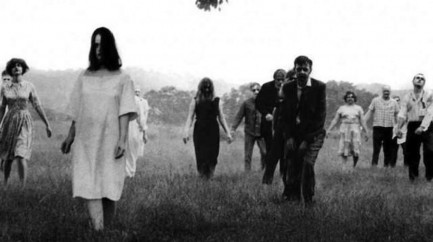 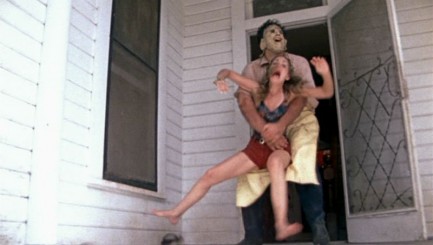  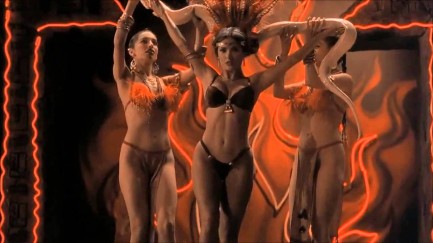 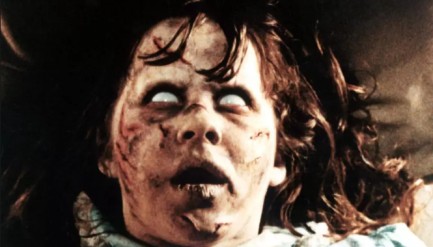 has shown it to be better and more influential than The Lost Boys, which was discussed at length. If you doubt that, note that Near Dark's critic score on Rotten Tomatoes is 88%, while Lost Boys' is 27%. Critics are often wrong, especially when it comes to horror, but that level of variance is no fluke. And just to settle the argument, the audience rater on that website also prefers Near Dark. We suspect either box office receipts or Roth's personal preference played a role there, when quality should have been the deciding factor. has shown it to be better and more influential than The Lost Boys, which was discussed at length. If you doubt that, note that Near Dark's critic score on Rotten Tomatoes is 88%, while Lost Boys' is 27%. Critics are often wrong, especially when it comes to horror, but that level of variance is no fluke. And just to settle the argument, the audience rater on that website also prefers Near Dark. We suspect either box office receipts or Roth's personal preference played a role there, when quality should have been the deciding factor.
But we were gratified to see that many of our cherished beliefs were echoed by Roth and his co-hosts Rob Zombie and The Walking Dead producer Greg Nicotero. Yes, the towering werewolf from The Howling is the scariest ever put on screen. Beyond a doubt, John Carpenter's The Thing, which was close to universally panned upon release, is a top tier thriller. We're anticipating the segment on ghosts, the focus of Sunday night's series finale. We imagine these were saved for last because viewers are most interested in the subject, a curiosity that derives from the fact that many people actually believe ghosts exist. We expect the episode to discuss such old and new classics as The Haunting, The Shining, The Ring, and The Woman in Black. We'll see. But no spoilers, please. If you're in the States you can watch it before we do, whereas we'll have to (totally legally, we swear) download it the next day. But whenever you watch it, the show has been a nice treat for horror aficionados. 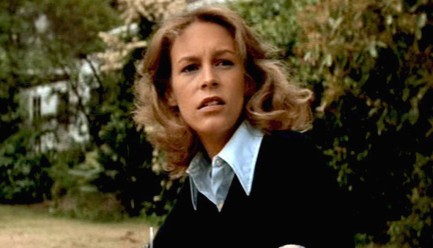 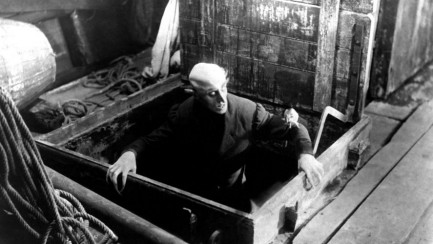  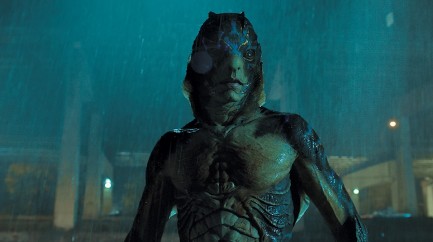 
 Horror is a universal language 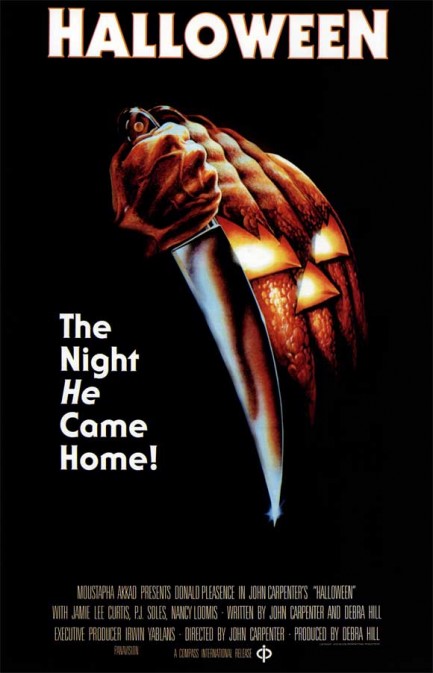 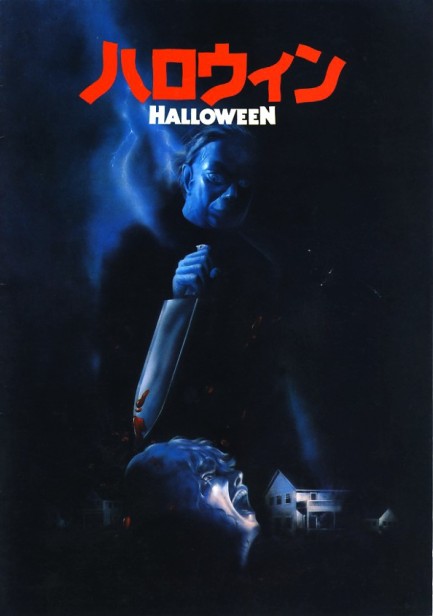 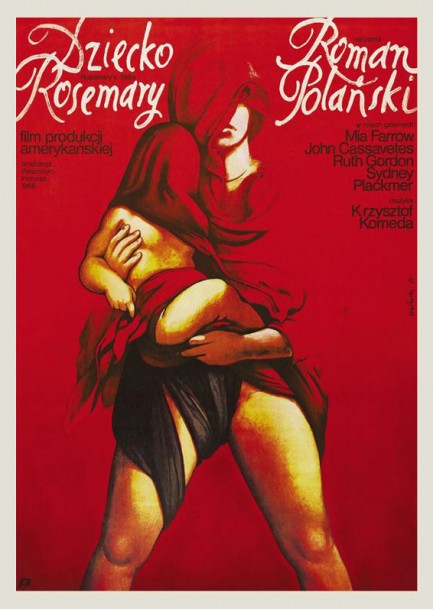 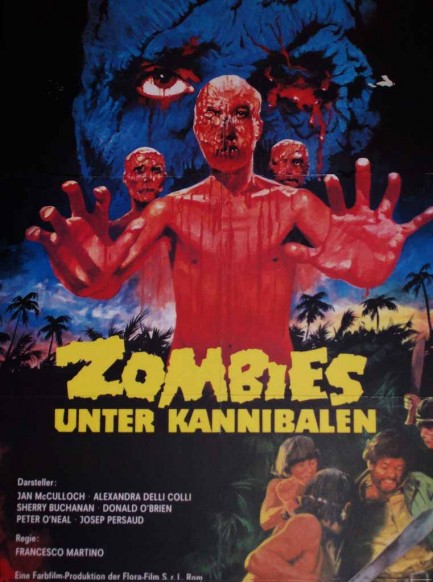 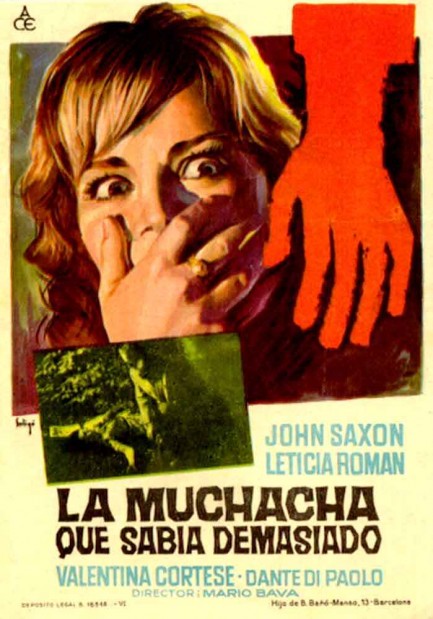 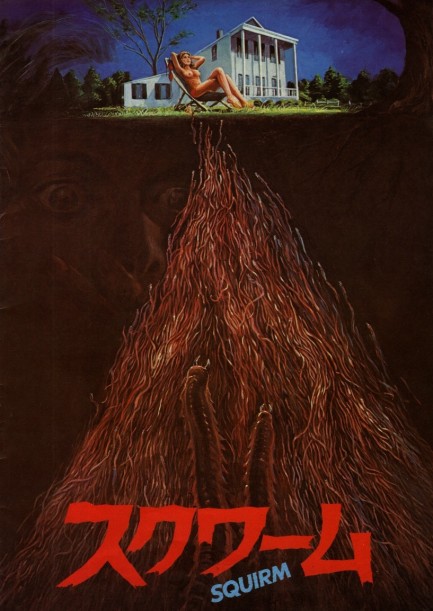 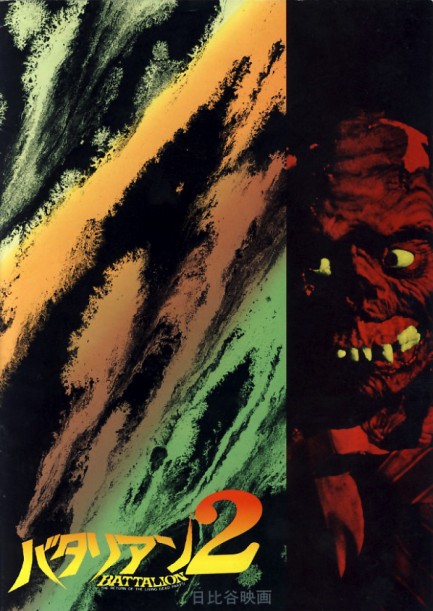 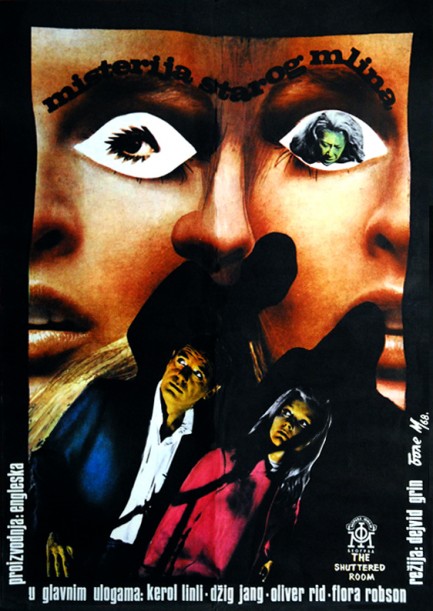 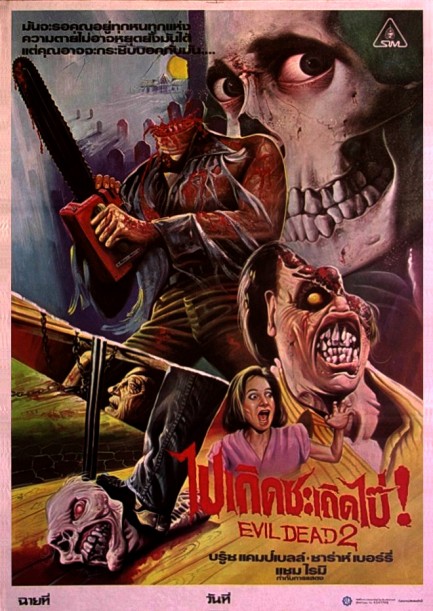 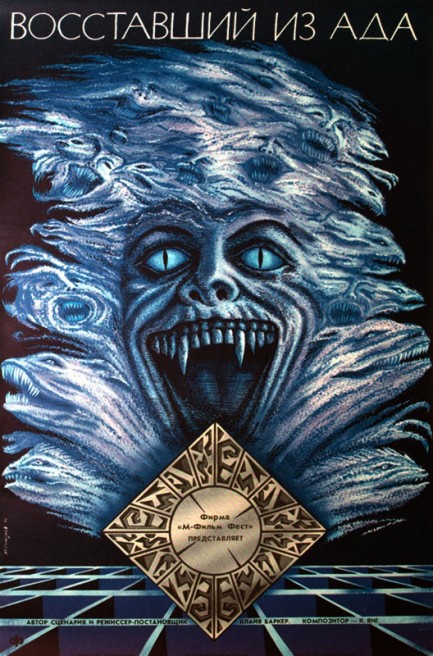 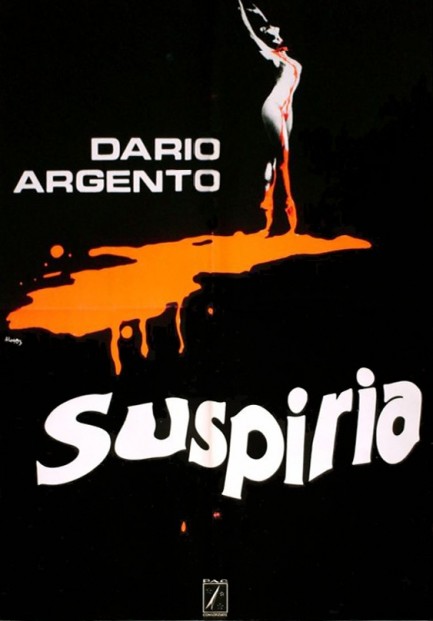 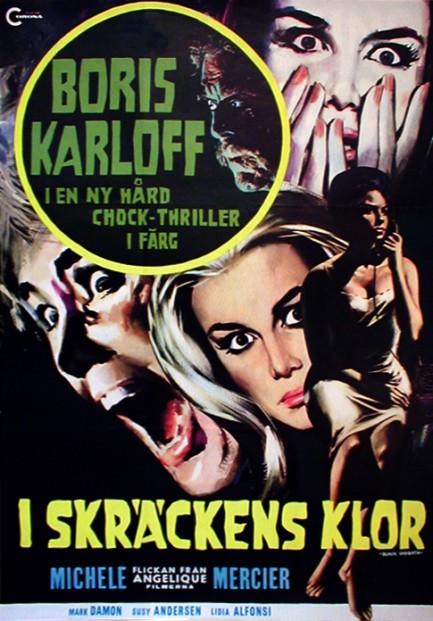  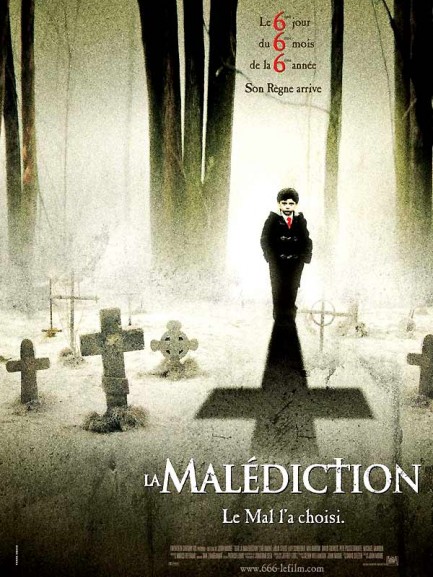   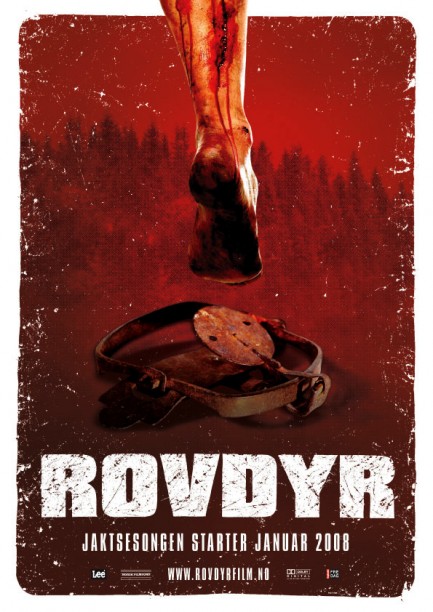 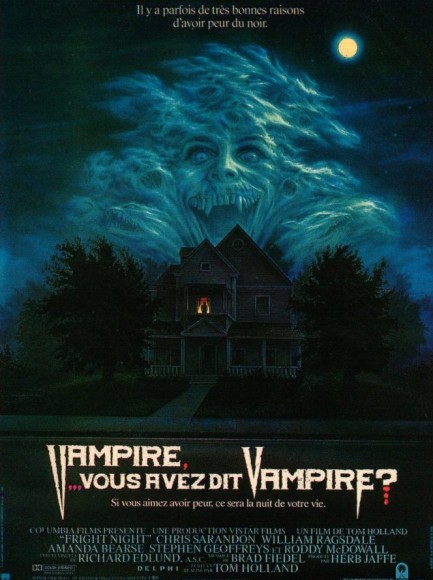 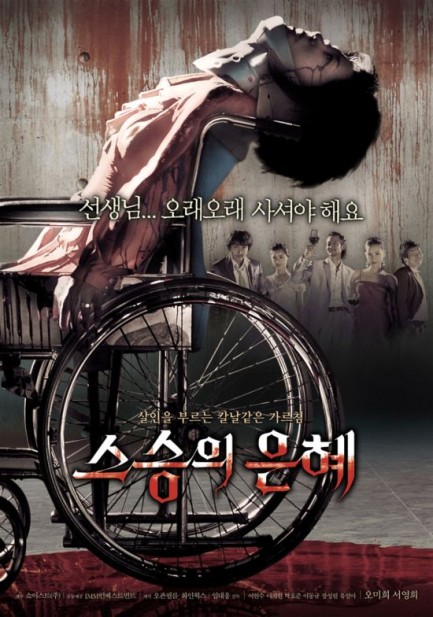
Above is a worldwide assortment of the creepiest posters we could find in honor of Halloween. Interestingly, Halloween is getting more popular internationally all the time. Where we live it was virtually ignored as recently as ten years ago, but nowadays it’s not a rarity to see both kids and adults dressed in costumes for the occasion. Trick-or-treating hasn’t quite taken hold, just because the layout of the communities don’t really allow for it, but adopting new personas or playing characters is something everyone seems to love, no matter where they live. Everyone likes a good scare, too, and these films do the job nicely. They are Halloween, Halloween again, Rosemary’s Baby, Zombie Holocaust, The Girl Who Knew Too Much, Squirm, Return of the Living Dead 2, The Shuttered Room, Evil Dead 2, Hellraiser, Suspiria, The Incredible Shrinking Man, Vampire Women, The Omen, The Thing, The Shining, Backwoods, Fright Night, and Seuseung-ui eunhye. Happy trick-or-treating.
 Author Jack Torrance redefines writer’s block by turning into one. 
Remember Stanley Kubrick’s classic horror film The Shining, in which we see Jack Nicholson’s character Jack Torrance spending weeks writing his great American novel, only to learn near the climax that the entire manuscript consists of a single repeated sentence? Well, now you can buy Jack Torrance’s masterpiece. It’s called, of course, All Work and No Play Makes Jack a Dull Boy, and consists of that sentence over, and over, and over. Quick to read but slow to comprehend, this confounding but ultimately visionary work will likely secure an honored place for Torrance alongside other fictional fiction writers, such as Paul Sheldon and Joan Wilder. All Work is available online here. Get ’em while they’re hot.
|
 |

The headlines that mattered yesteryear.
2003—Hope Dies
Film legend Bob Hope dies of pneumonia two months after celebrating his 100th birthday. 1945—Churchill Given the Sack
In spite of admiring Winston Churchill as a great wartime leader, Britons elect
Clement Attlee the nation's new prime minister in a sweeping victory for the Labour Party over the Conservatives. 1952—Evita Peron Dies
Eva Duarte de Peron, aka Evita, wife of the president of the Argentine Republic, dies from cancer at age 33. Evita had brought the working classes into a position of political power never witnessed before, but was hated by the nation's powerful military class. She is lain to rest in Milan, Italy in a secret grave under a nun's name, but is eventually returned to Argentina for reburial beside her husband in 1974. 1943—Mussolini Calls It Quits
Italian dictator Benito Mussolini steps down as head of the armed forces and the government. It soon becomes clear that Il Duce did not relinquish power voluntarily, but was forced to resign after former Fascist colleagues turned against him. He is later installed by Germany as leader of the Italian Social Republic in the north of the country, but is killed by partisans in 1945.
|

|
|

It's easy. We have an uploader that makes it a snap. Use it to submit your art, text, header, and subhead. Your post can be funny, serious, or anything in between, as long as it's vintage pulp. You'll get a byline and experience the fleeting pride of free authorship. We'll edit your post for typos, but the rest is up to you. Click here to give us your best shot.

|
|


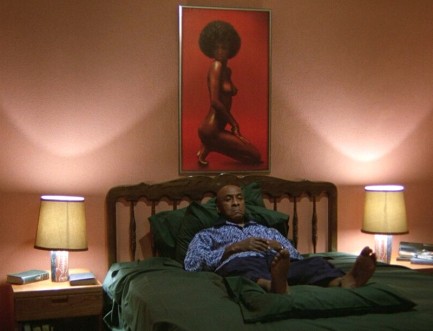
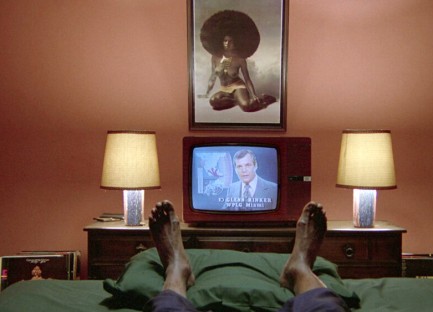






















 the tension that results from not knowing—usually, at least—which characters will survive. We love how the films' kinetic and often low budget natures lead to amazing little accidents, such as the bit in The Texas Chainsaw Massacre when Leatherface grabs Teri McMinn on the porch of his house and both the girl's sandals fly off. That sort of detail isn't in a script. It happens during the shoot, and the director thanks the filmic gods for the extra iota of serendipitous realism.
the tension that results from not knowing—usually, at least—which characters will survive. We love how the films' kinetic and often low budget natures lead to amazing little accidents, such as the bit in The Texas Chainsaw Massacre when Leatherface grabs Teri McMinn on the porch of his house and both the girl's sandals fly off. That sort of detail isn't in a script. It happens during the shoot, and the director thanks the filmic gods for the extra iota of serendipitous realism.



 has shown it to be better and more influential than The Lost Boys, which was discussed at length. If you doubt that, note that Near Dark's critic score on Rotten Tomatoes is 88%, while Lost Boys' is 27%. Critics are often wrong, especially when it comes to horror, but that level of variance is no fluke. And just to settle the argument, the audience rater on that website also prefers Near Dark. We suspect either box office receipts or Roth's personal preference played a role there, when quality should have been the deciding factor.
has shown it to be better and more influential than The Lost Boys, which was discussed at length. If you doubt that, note that Near Dark's critic score on Rotten Tomatoes is 88%, while Lost Boys' is 27%. Critics are often wrong, especially when it comes to horror, but that level of variance is no fluke. And just to settle the argument, the audience rater on that website also prefers Near Dark. We suspect either box office receipts or Roth's personal preference played a role there, when quality should have been the deciding factor.






























































































